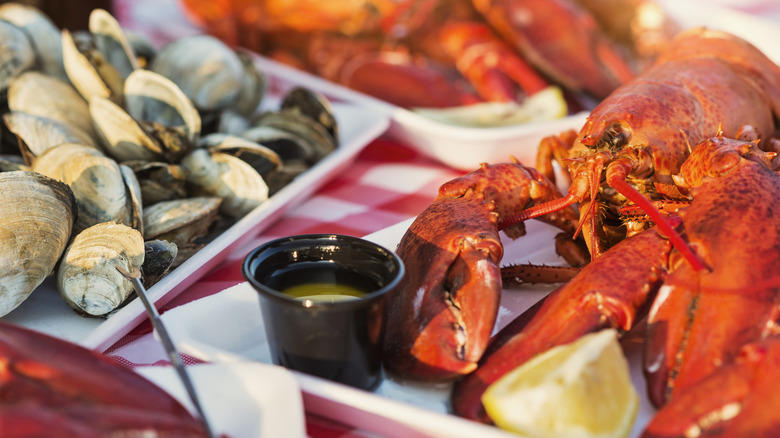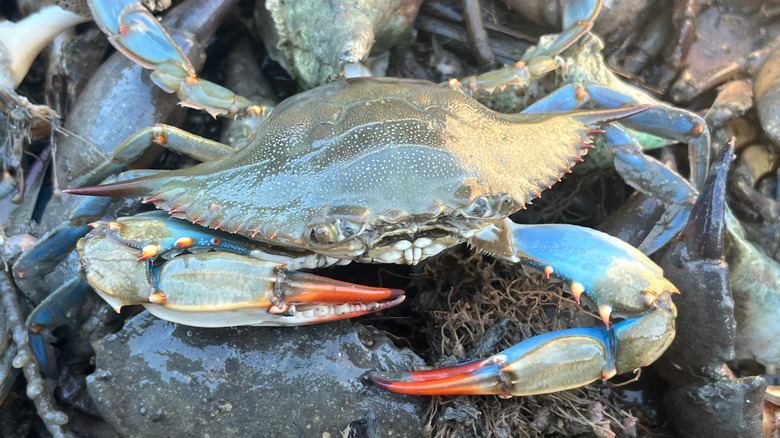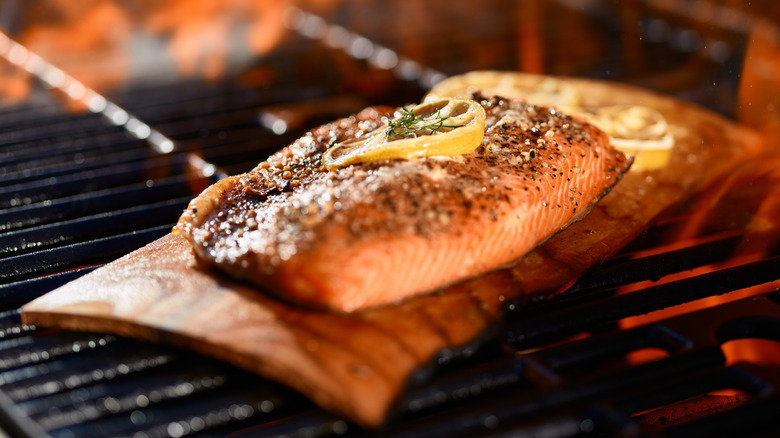East Coast Vs. West Coast: Where Should You Visit For The Best Seafood?
As one of the largest countries in the world, the United States is blessed with a landscape of unrivaled variety. From the bayous of Louisiana to the majestic Rocky Mountains, the U.S. has something for everyone. To top it off, the country boasts thousands of miles of coastline on both the Atlantic and Pacific Ocean. These massive shorelines are home to about 40% of the nation's population, which has naturally resulted in a spirited rivalry over the years.
Folks from the faster-paced East Coast tend to see themselves as more lively, urbane, and outspoken, while denizens of the West Coast celebrate their laid-back, outdoorsy way of life. We also see this one-upmanship in sports events such as the NBA All Star Game, which pits elite players from the East against the best in the West. It's even spilled over into pop culture, especially during the 1990s, when the hyper-intense East Coast vs. West Coast hip-hop rivalry grew deadly at times.
But what about seafood? Both coasts have access to almost unimaginable marine resources and have developed their own innovative and delicious ways of preparing these treasures from the deep. Whether you're diving into a pile of blue crab in Maryland or downing a slab of wild Chinook salmon in Seattle, each coast has amazing and unique ocean-based dishes. That said, if you could only choose one, which would it be?
The case for the East Coast
Let's start with the rocky shores of New England, where lobster is king. Sure, Southern California has spiny lobster (which lack front claws), but most are exported to Asia, and let's face it, they just don't compare with what's found out East. Maine lobster remains legendary and locally eaten on its own (steamed, broiled, baked, grilled, boiled), in soup (Lobster bisque, anyone?), or in the sublime form of a lobster roll. New England is also home to the best cod in the country — as well as sole and haddock — which make for some great fish and chips.
The Northeast is Shellfish Central as well, with clam shacks up and down the seashore serving up fried bivalves and more with cold beer. There are also traditional beachside seafood boils, as well as the New England clambake, which is not just an exercise in deliciousness, but also a cultural institution introduced to colonists by Native American tribes. And we can't talk about the East Coast without mentioning chowder: New England-style clam chowder is a deeply-satisfying creamy concoction that sticks to your ribs on cold winter days, while Manhattan's version employs tomatoes to give it a slightly sweet and tangy zip.
When it comes to oysters, those grown on the East Coast tend to be bigger than their West Coast counterparts while also delivering a slightly stronger brine taste. In Maryland they revere their local blue crab in an almost religious manner and swear that they're the best in the nation; the Atlantic shrimp served up in the Carolinas is really hard beat, while in Florida you can get down with an array of thick grilled fish such as grouper, red snapper, and dorado (mahi-mahi), or nibble on conch ceviche in the sun-splashed, boozy environs of Key West.
The case for the West Coast
Starting in the icy waters of Alaska, the West Coast just begins to reveal the depths of its ocean bounty with the mighty Pacific halibut. Known for its delicate flavor and firm and flaky texture, this massive flatfish (they can grow up to 500 pounds) is a staple throughout the region. While halibut is high on the list, Pacific salmon rules the roost. More flavorful and robust than their Atlantic cousins, Pacific salmon come in several varieties and can be prepared in myriad ways, though perhaps nothing beats grilling or baking a fat filet on a cedar plank.
When it comes to crab, Alaska boasts both king and snow crab, though it could be argued that the true West Coast crustacean is Dungeness crab. Ranging from the Aleutian Islands to Santa Barbara, California, these chunksters are known for their sweet, succulent flavor profile and just may give Maryland blue crab a run for its money.
Much of the coast is rich in shellfish, especially the inlets and fjords of Washington state, which is also one of the best spots in the country for whale watching. Here you can harvest and dine on the the geoduck (pronounced "gooey-duck") — a gargantuan long-necked clam — though Pacific razor clams found on the coastal beaches are also highly prized and among the hardest to catch. California's rich waters produce a flurry of delicacies including Yellowfin and Bigeye tuna, squid, sea urchin, barracuda, mackerel and Pacific wahoo, while Hawaii just may take the gold with poke, a delectable Japanese-fusion concoction made of marinated cubed sashimi (often ahi or octopus) served with fresh veggies and rice. For even more American seafood goodness that's neither East nor West Coast, head to this gorgeous town on the Gulf of Mexico.


